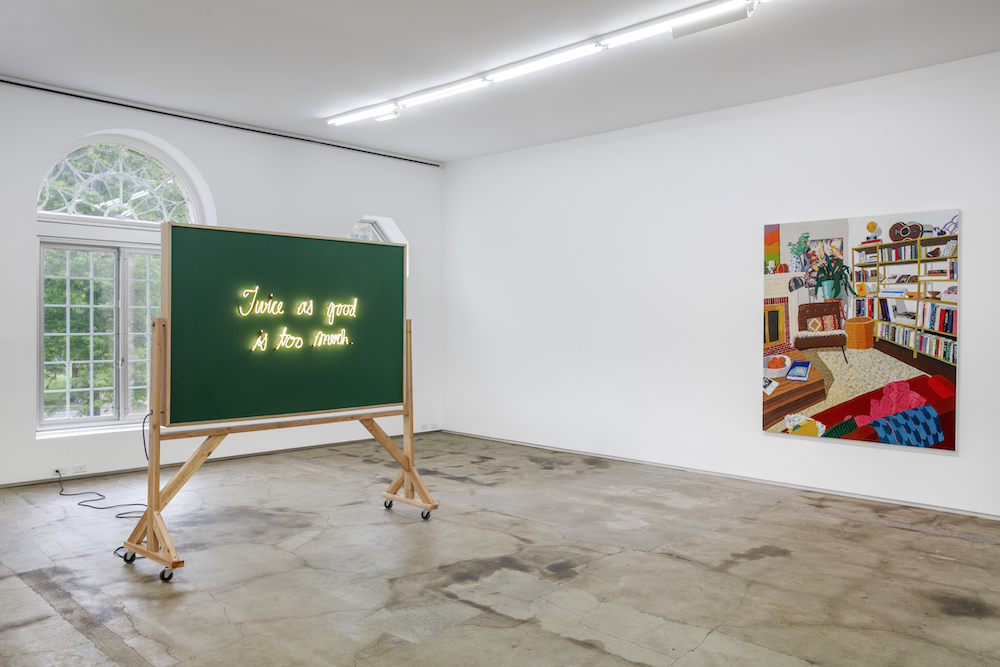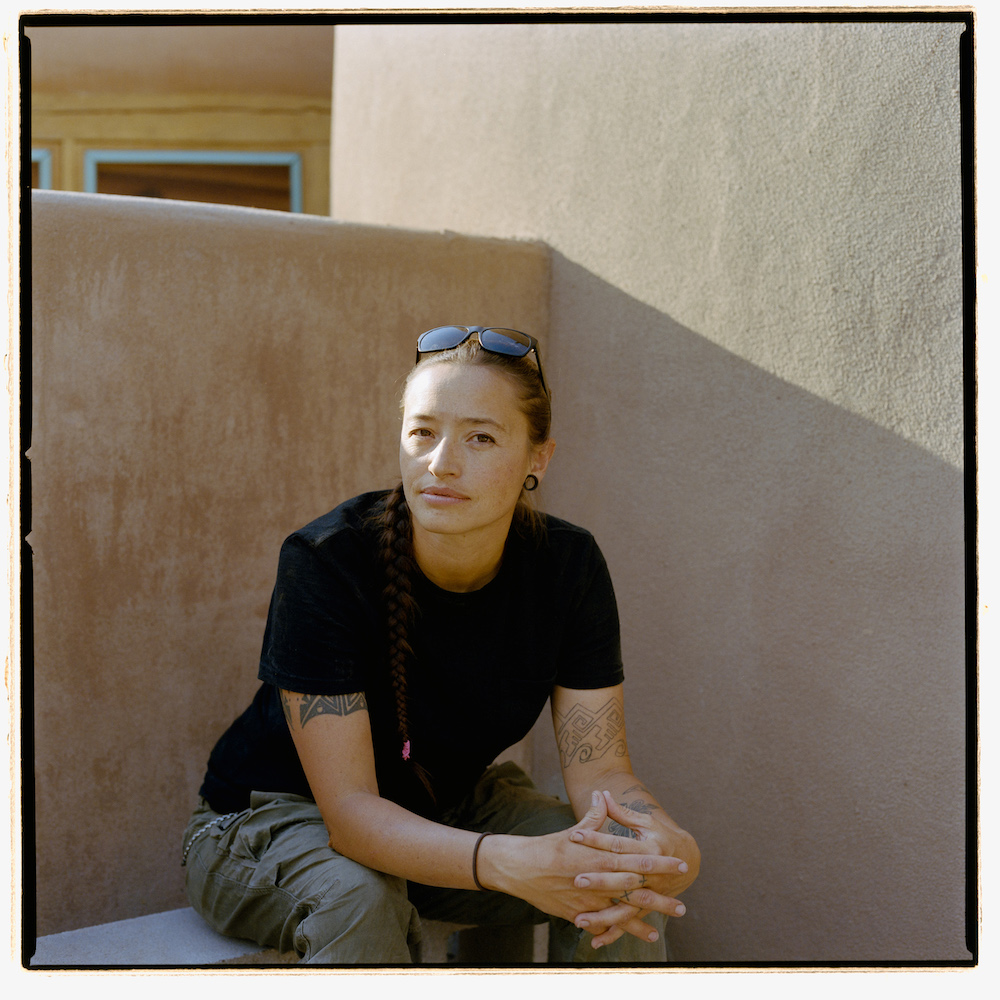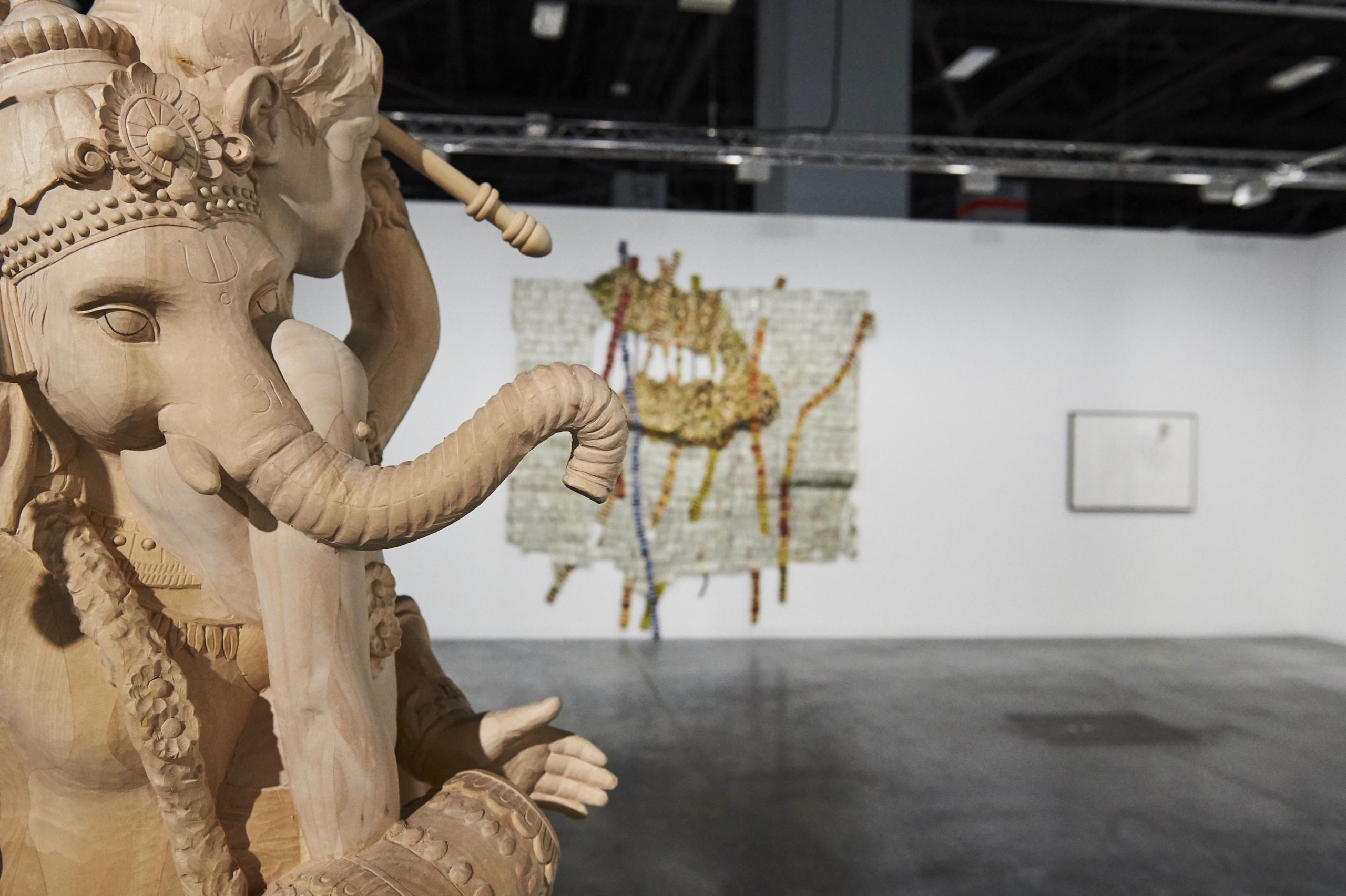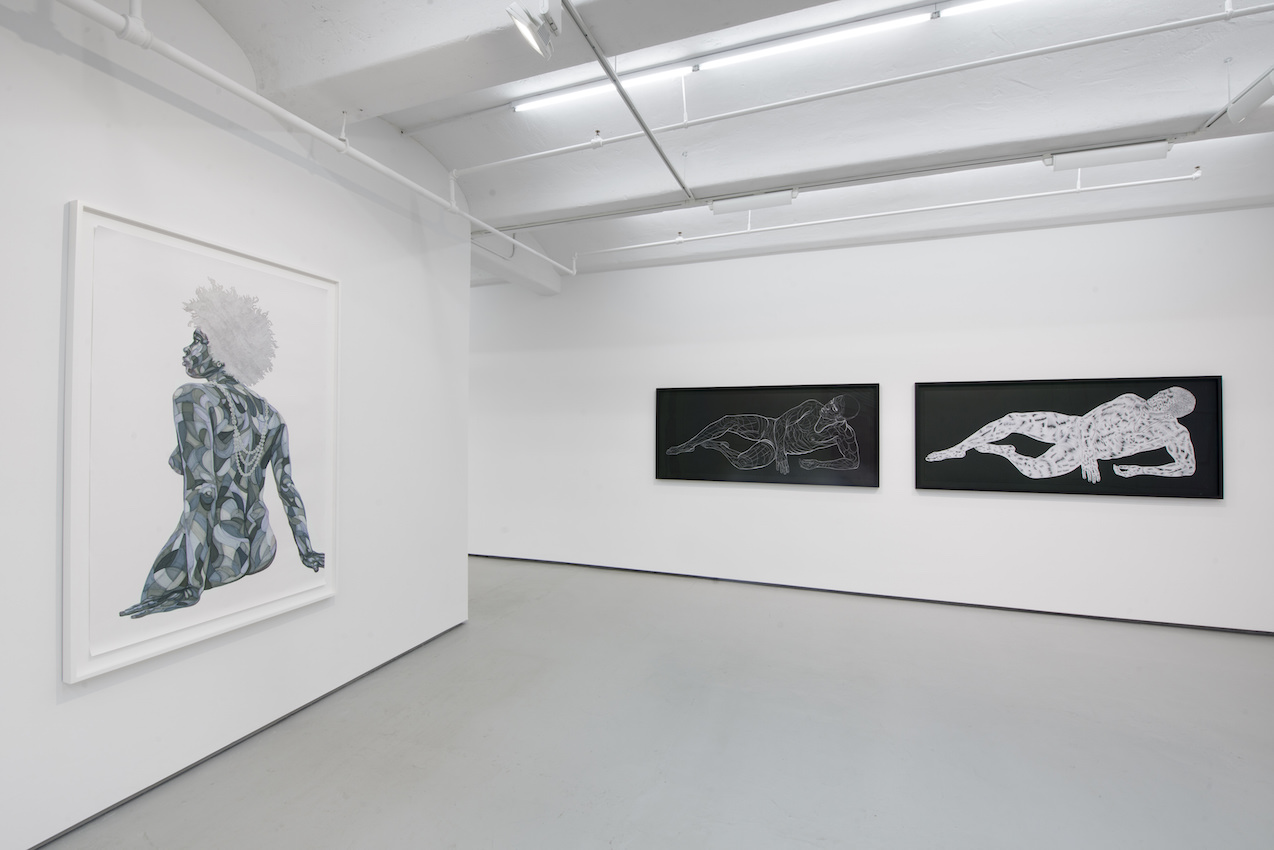“Feedback” is currently on view at Jack Shainman’s The School in Kinderhook, NY, through October 30. The group exhibition is curated by Helen Molesworth and includes work by Becky Suss, Sanford Biggers, Diedrick Brackens, Lauren Halsey, Hilary Pecis, Lynette Yiadom-Boakye, and others. Taking its name from Janet Cardiff and George Bures Miller’s sound installation of the same name, it looks at the idea of feedback systems through the lens of education in the most fitting of settings—a former school.
In an essay for the show, Molesworth asks: how, where, and what do we learn? Answering this question in a biennial-like approach, she chose pieces by artists she’s followed for some time, describing them as “a microcosm, a snapshot in time, of the feedback loop that is culture—people make things that help us learn things, that allow us to think things, that help us to ask questions, that propel us to make things.”
Whitewall had the chance to speak with Molesworth and one of the artists whose work is on view, Suss, via Zoom earlier this spring. The curator and artist discussed art as a vehicle for learning, why artists are the best researchers, and rethinking our own experience of education within the context of America.
WHITEWALL: Helen, in your essay for the show you talk about a very visceral experience the first time you visited The School. How did that partly inspire what you wanted to do in “Feedback”?
HELEN MOLESWORTH: Jack reached out and said, “Would you like to do a show at The School?” I was really interested. I realized I had never done a biennial—that kind of show where you just want to think about things that have caught your eye, caught your imagination. I’d never had the freedom of the biennial. And I had the Janet Cardiff thing always like a pebble in my shoe but I couldn’t figure out what I wanted to do with that work of art.
Then I saw The School, and it all fell into place. I did have what, for me, was an auditory hallucination. I walked in the building, and I felt like I could hear the kids running around. I also felt melancholy, that there was a school building that was decommissioned. Also, the weirdness of how art spaces take over defunct spaces—that kind of history is also beautiful.
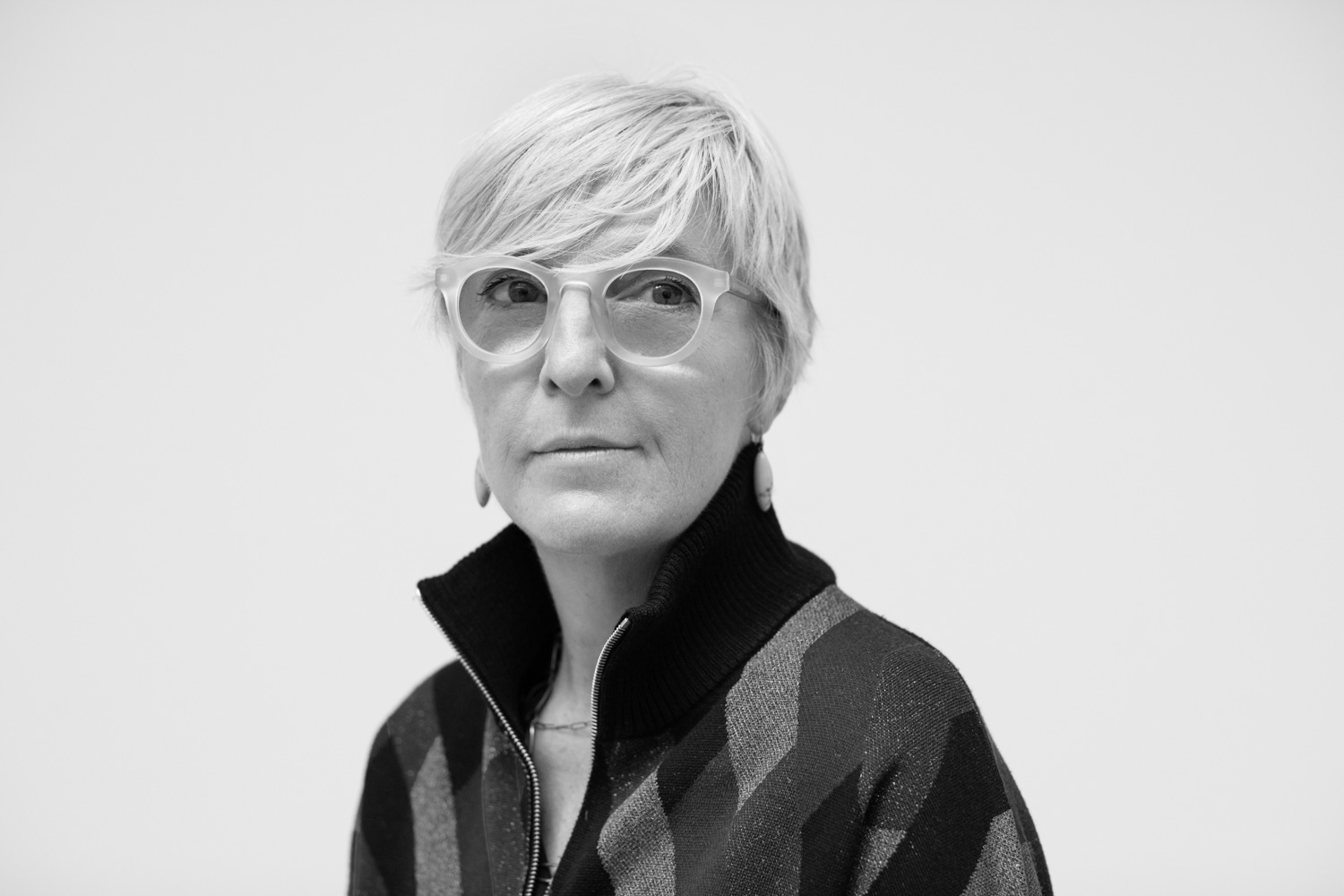
Helen Molesworth, photo by Brigitte Lacombe.
WW: Becky you’ve shown there before. Is it similarly a special place for you? What’s it like to show work there?
BECKY SUSS: The entire space has those moments that I’m always concerned with in my own work. You have these spaces where there are leftovers from people that live there, bits of wallpaper, pieces of molding that have existed through ten different families, or the objects that people bring to it. The School is great because it’s just like that. You see these moments popping out, the way that the stairwell goes up, the rooms that have the old paint.
The rooms depicted in my work carry so much weight and I want them to allow the person who is viewing them to feel like they are occupying the depicted space. The School has these little tiny moments that collapse the space between the time of when it was a school and when we’re in it now. You have a moment where it’s both times at once.
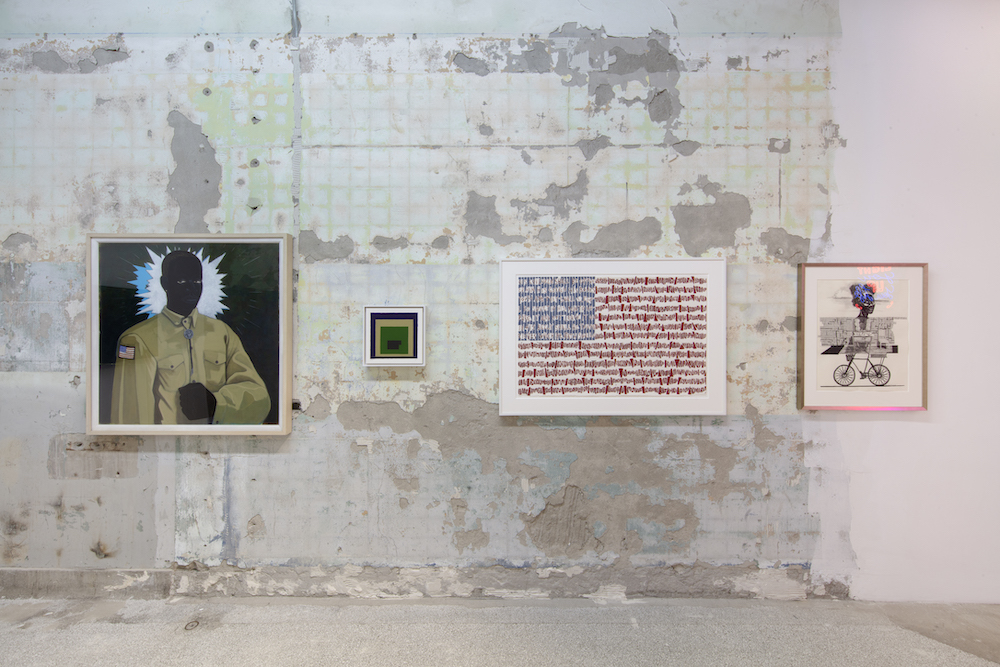
Installation view of “Feedback” at The School, courtesy of Jack Shainman.
WW: Helen, when you decided to treat this like your biennial, how did you connect with Becky and start choosing other artists and their work?
HM: I had already seen Becky’s work at Jack’s and had gotten obsessed with it. One of the things I’ve been really interested in is, where do we learn and how do we learn? We think we go to school and learn, but of course we’re always learning in domestic space. The role of parents and everything about your domestic space as a kid is inflecting who you’re going to be, how you’re going to be, what you’re learning, how you organize information. The way I read Becky’s paintings is that they’re sort of like memory pictures—they’re the way you remember a space rather than the way the space actually might be. And I liked that feeling in The School because I think we have memories of school that may or may not be what it actually was.
So, when I was thinking about what artists I wanted to include in the show, Becky’s paintings met several of the criteria that I was working with: How do you learn? Where do you learn it? What role does memory play in how you get in the idea of who you are in the world?
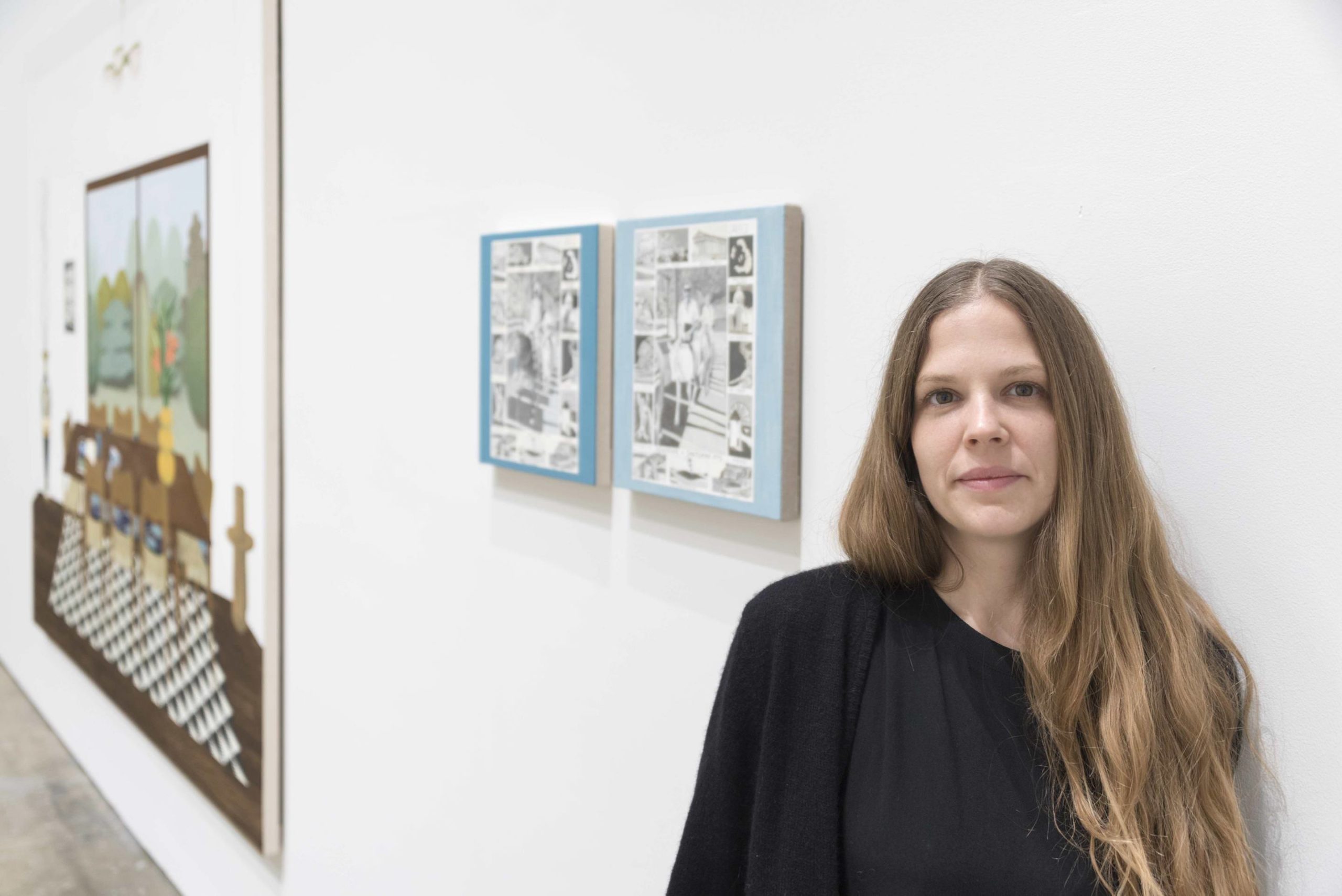
Becky Suss
Portrait courtesy of Jack Shainman
WW: I wonder how the fact that school was so disrupted over the past year due to the pandemic impacted your thoughts around the show?
BS: The domestic space has become the site of school. Everybody is learning from their home. That’s personal for me. In terms of my work, I was thinking about, what does it mean? Do people care more about domestic space, now that they’ve had to spend 12 months valuing it in a different way? I don’t know.
I remember at the beginning of the pandemic being like, “I can’t wash another dish.” And then I think of my mom 30 years ago and about how derided the idea of a housewife is. You come to discover how hard it is and how many people who never worked at home were like, “Being at home with all of these chores and kids all day is insane.” Yeah, you think so?! I want that to stick but I don’t know if it will.
HM: I really wonder about that, too. And it gets into so many things about privilege, who got to stay at home and who didn’t get to stay at home, and the brain drain out of the work force of women. For me, I don’t have a child, but I’ve long watched my friends who did have children and know that this fantasy about women having it all is just that. You don’t get to have it all. People make choices and if you have kids, you give shit up. And if you don’t have kids, you give shit up. That’s real and we live in this world that acts like that’s not real. It’s totally real. Art and work and children, they don’t necessarily fit together easily so there are going to be sacrifices there.
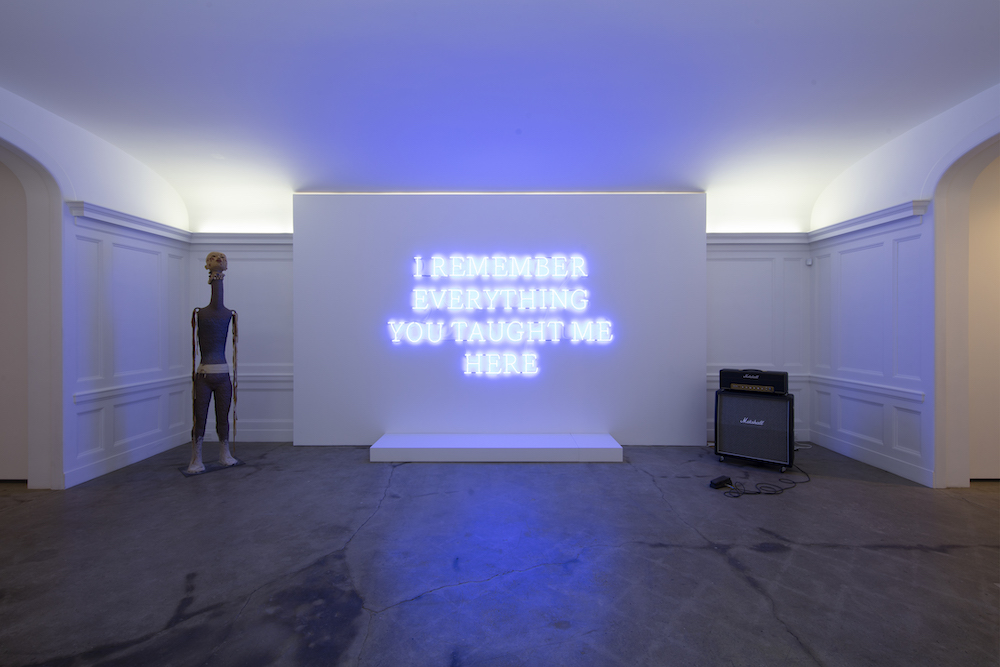
Installation view of “Feedback” at The School, courtesy of Jack Shainman.
WW: So real!
Becky, you’re showing a new piece in “Feedback,” Logan Family Home (1933) (2020). Can you tell us about it?
BS: I’d moved into making paintings specifically about books and children’s learning—I was thinking I’m going to make this collection of paintings which is also going to be a collection of books that I can then read to my son as he’s ready.
The painting that is new in the show is from the book Roll of Thunder, Hear My Cry by Mildred D. Taylor, written in the ‘70s. It’s about Cassie Logan and her family. She’s a young African American girl in 1930s Mississippi. I read it when I was a kid and I remember it being pretty powerful. I was reading the book and going back not just through the literature itself but I looked at WPA era photographs in the Library of Congress, researching, putting it all together.
One of the things that stuck with me about this book when I reread it was how much of it was steeped in the initial success and ultimate failures of Reconstruction in the South. Because although it’s not directly addressed, this family was African American and during Reconstruction had 300 acres of prime farming land. But Reconstruction fell apart so quickly, it had basically been a constant struggle to fight off white landowners that said the land actually belonged to them.
I learned about Reconstruction and its failures and implications in the future from reading this one novel. As a student I was taught more by fictional books than the conventional education. The way these books are framed in narratives are wonderful at teaching kids how the world works.

Installation view of “Feedback” at The School, courtesy of Jack Shainman.
HM: The thing that Becky hit upon in that story that for me is the most important structurally, is that for many of us, we were taught an official history. We now know, and we’ve known in various iterations our whole lives, that the official history is an outright falsehood. And many of us come to these other histories through art, through culture, through music, through novels, through paintings. I’ve learned so much more about the history of African American life and what it means for American life through culture than I ever learned in any classroom.
That’s one of the things that I’m so interested in: what happens if a school isn’t filled with teachers and students but instead filled with art objects that are producing all kinds of knowledge and the audience, we’re the learners and we have to figure out what our relationship is to learning from an art object?
WW: Objects and artists themselves! Every time I interview an artist, I walk away having not only learned something new, but inspired to research something new.
HM: I’ve always said artists are the best researchers. I think one of the essential criteria of being an artist is to be curious. And to be curious is also something that we praise in children and that we tend to want to phase out in adulthood. There’s some weird moment in development of the child where we don’t want curiosity, we want focus. Art is one of these places where curiosity is always rewarded.
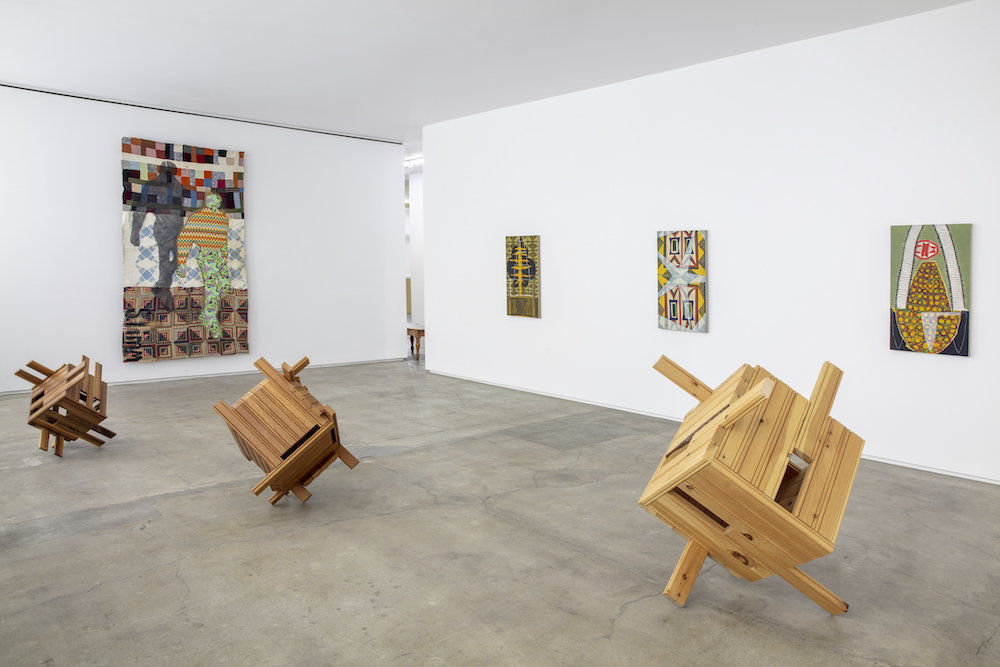
Installation view of “Feedback” at The School, courtesy of Jack Shainman.



